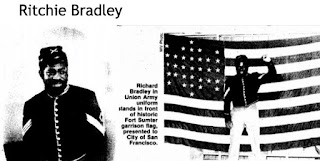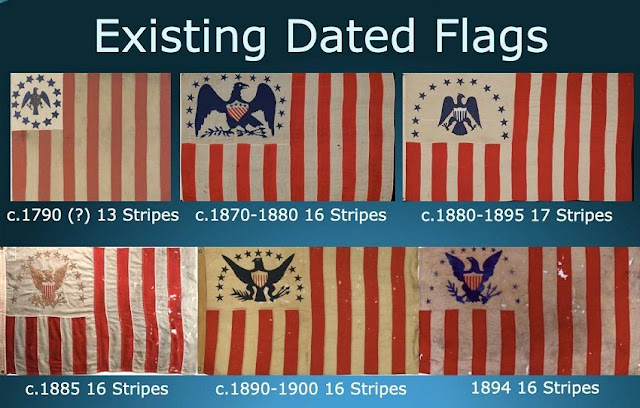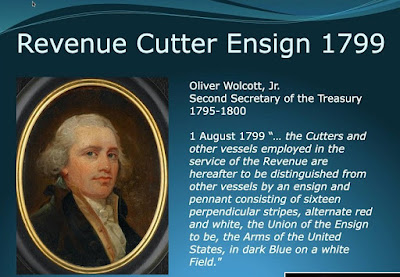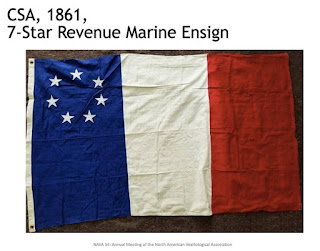Jim Ferrigan replayed his award winning presentation about
A Flag Incident in San Francisco in 1984. Back in 1984 the Confederate flag flew along side several other flags at the San Francisco State House. Attempts to get it removed peacefully were ignored, so a left leaning socialist group conducted a civil disobedient raid to remove the Confederate flag—which was a kin to the first version of the Confederate Naval Jack.
Many in the public do not realize that the popular Confederate flag is not the official flag of the Confederacy. The popular Confederate flag is the de facto flag of the Confederacy and is usually associated with official battle flag of the Confederacy. But this flag mostly closely resembles the second Naval Jack of the Confederacy.
In 1984 Ritchie Bradly dressed in Northern Civil War attire and proceeded to take down the Confederate flag at the San Francisco State House. You can see him standing in front of a reproduction of the 'Union Fort Sumter' flag of South Carolina, where the official start of the US Civil War began.
Richard Bradly was a part of a left-wing socialist organization. His demonstration of active civil disobedience took place with supporters who wished to see the Confederate flag removed from the San Francisco public property and promote a worker's socialist agenda. One banner reads: 'DOWN WITH THE CONFEDERATE FLAG OF SLAVERY & THE KKK! LABOR BLACK LEAGUE FOR SOCIAL JUSTICE! Another banner reads: 'FINISH THE CIVIL WAR! ONWARD TO A WORKERS STATE!'
You can see the flag being torn down by Dick Bradly. He was later released and the drama continued with a new flag, and several others until it was finally replaced. The Confederate flag was one of many that represented the heritage of California.
Although the Confederacy never saw any military action or gained traction in California, other nation states were able to make an impact on California that would have made a better replacement like the
Russian-American Company due to the colony at Ft. Ross; or
the Argentina flag when Hippolyte Bochard occupied Monterey in 1818. There was also the early US occupation of California in 1842 when
Catesby Jones seized Monterey, when the US only had 26 states.



















